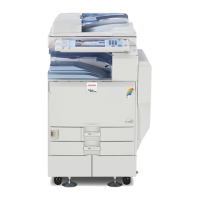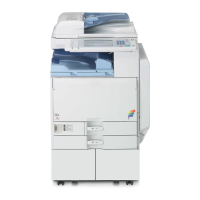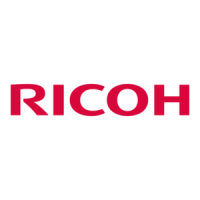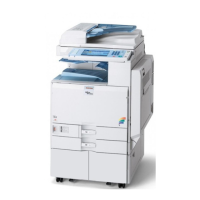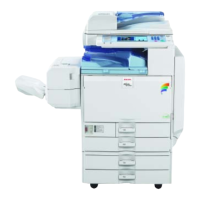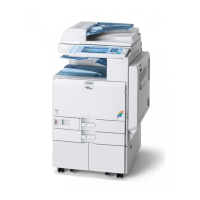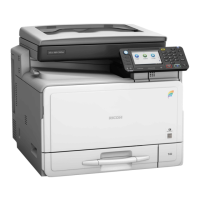User Authentication
51
2
❖ Operational Requirements for LDAP Authentication
To specify LDAP authentication, the following requirements must be met:
• The Printer/Scanner unit must be installed.
• The network configuration must allow the machine to detect the presence
of the LDAP server.
• When SSL is being used, TLSv1, SSLv2, or SSLv3 can function on the LDAP
server.
• The LDAP server must be registered in the machine.
For details about registration, see Network Guide.
Limitation
❒ Under LDAP authentication, you cannot specify access limits for groups reg-
istered in the LDAP Server.
❒ When using LDAP Authentication, you cannot use reference functions in
LDAP Search for servers using SSL.
❒ Enter the user’s login user name using up to 32 characters and login password
using up to 128 characters.
❒ Do not use double-byte Japanese, Traditional Chinese, Simplified Chinese, or
Hangul characters when entering the login user name or password. If you use
double-byte characters , you cannot authenticate using Web Image Monitor.
Note
❒ Under LDAP Authentication, if “Anonymous Authentication” in the LDAP
server’s settings is not set to "Prohibit", users who do not have an LDAP serv-
er account might still be able to gain access.
❒ If the LDAP server is configured using Windows Active Directory, Anony-
mous Authentication might be available. If Windows Authentication is avail-
able, we recommend you use it.
❒ The first time an unregistered user accesses the machine after LDAP authen-
tication has been specified, the user is registered in the machine and can use
the functions available under Function Permissions during LDAP Authenti-
cation.
❒ To limit the available functions for each user, register each user and corre-
sponding Function Permissions setting in the address book, or specify Func-
tion Permissions for each registered user. The Function Permissions setting
becomes effective when the user accesses the machine subsequently.
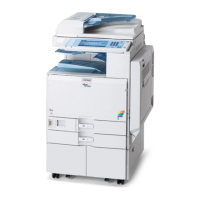
